Red bean paste (anko in Japanese or hong dou sha in Chinese) is a mildly sweet and nutty filling in many traditional East Asian desserts. You might think this sweet filling is complicated, as Asian desserts are usually overlooked due to their supposedly exotic ingredients.
Our recipe will demystify cooking this tasty filling and break down how to make it at home without any fancy equipment.
Jump to:
What is Red Bean Paste?
Anko is a paste of boiled, then mashed and sweetened red adzuki beans. Depending on whether the beans’ husks are removed, the paste can have a smooth texture or a thicker and more heterogeneous one.
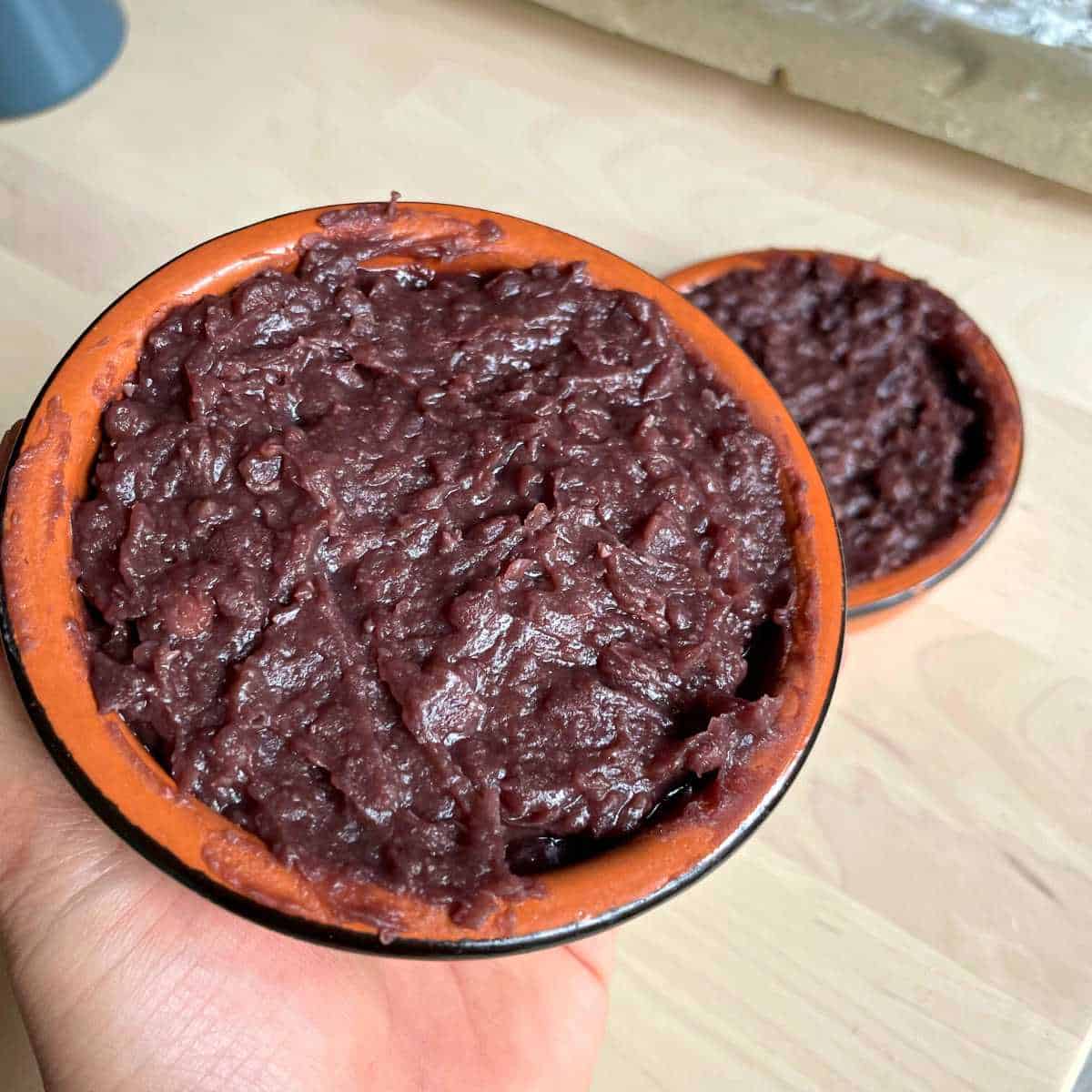
It is a staple in many Chinese, Japanese, and Korean dishes. However, there are many regional variations in this basic formula.
For example, Chinese versions traditionally use rock sugar (bing tang) and might add lard (or other fats and oil) for extra richness. They are used in plenty of Chinese pastries, mooncakes being particularly famous.
In Korea, they use black adzuki and remove the peel before mashing to make a smooth white paste.
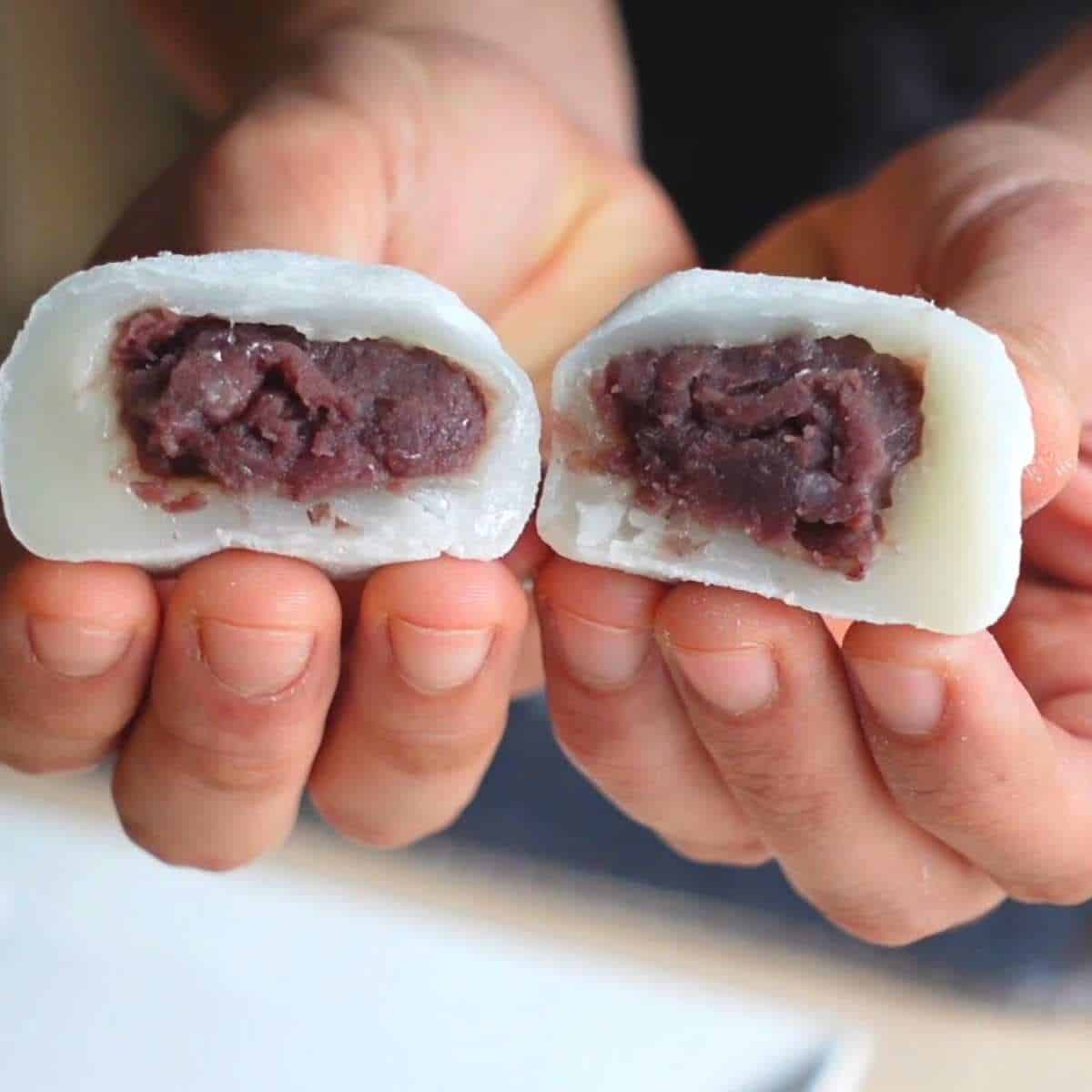
Meanwhile, Japan uses anko in numerous desserts and even savoury dishes. Examples are mochi, dorayaki, taiyaki and zenzai. Japanese anko is usually the sweetest variety.
Our recipe below will result in a thick red bean paste without oil. It can even be made without a pressure cooker, the traditionally used equipment.
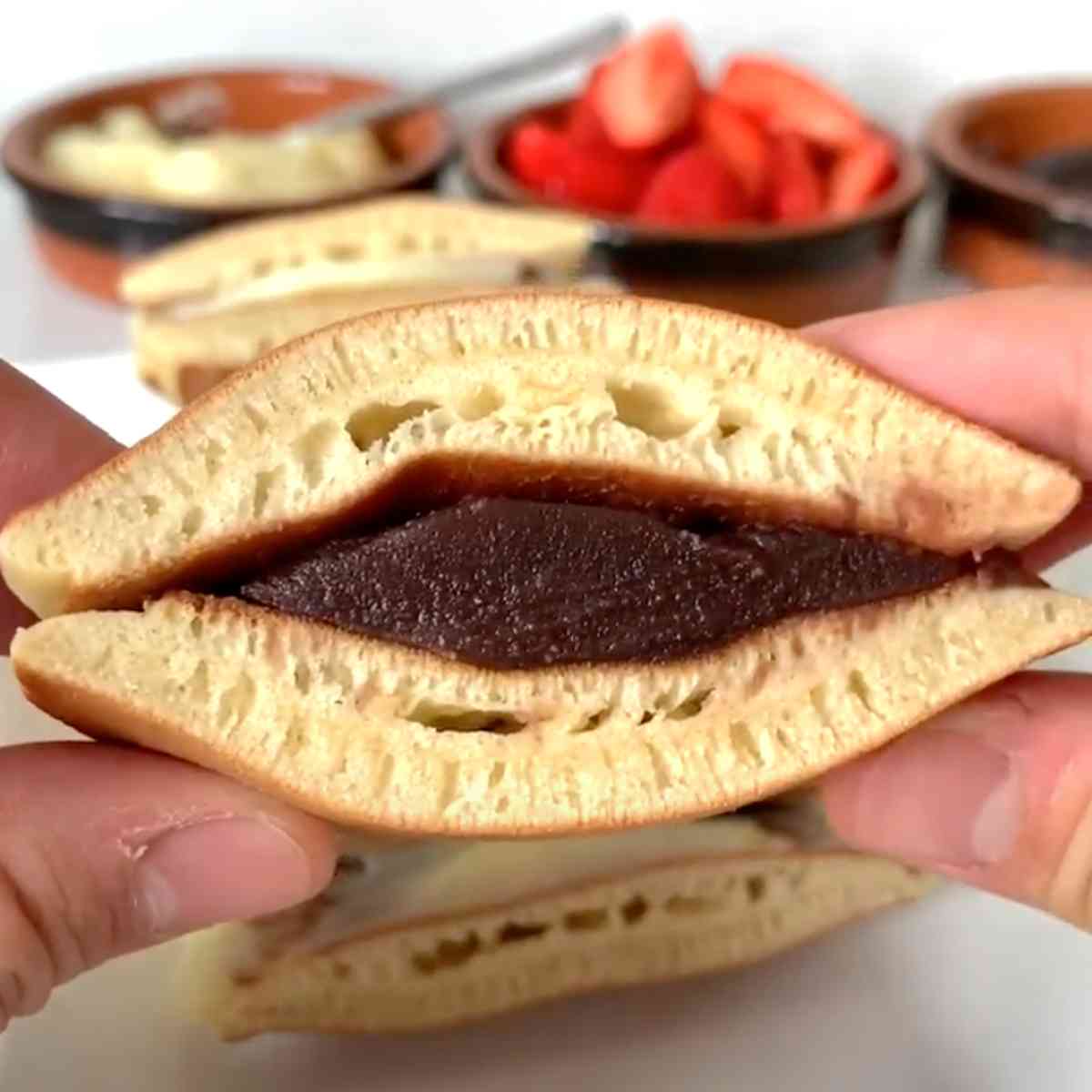
Taste
Unlike plain Adzuki beans, red bean paste tastes sweet due to the added sugar. The taste of plain adzuki is neutral enough to be incorporated into savoury dishes. It provides a lighter sweetness to the saltiness of the other ingredients. On the other hand, Anko tastes sweet and earthy and has a pleasantly soft texture. The addition of oil can make it even slicker.
Ingredients
The ingredients you’ll need to make anko are adzuki beans, sugar and water. We add a pinch of salt, but this is optional.
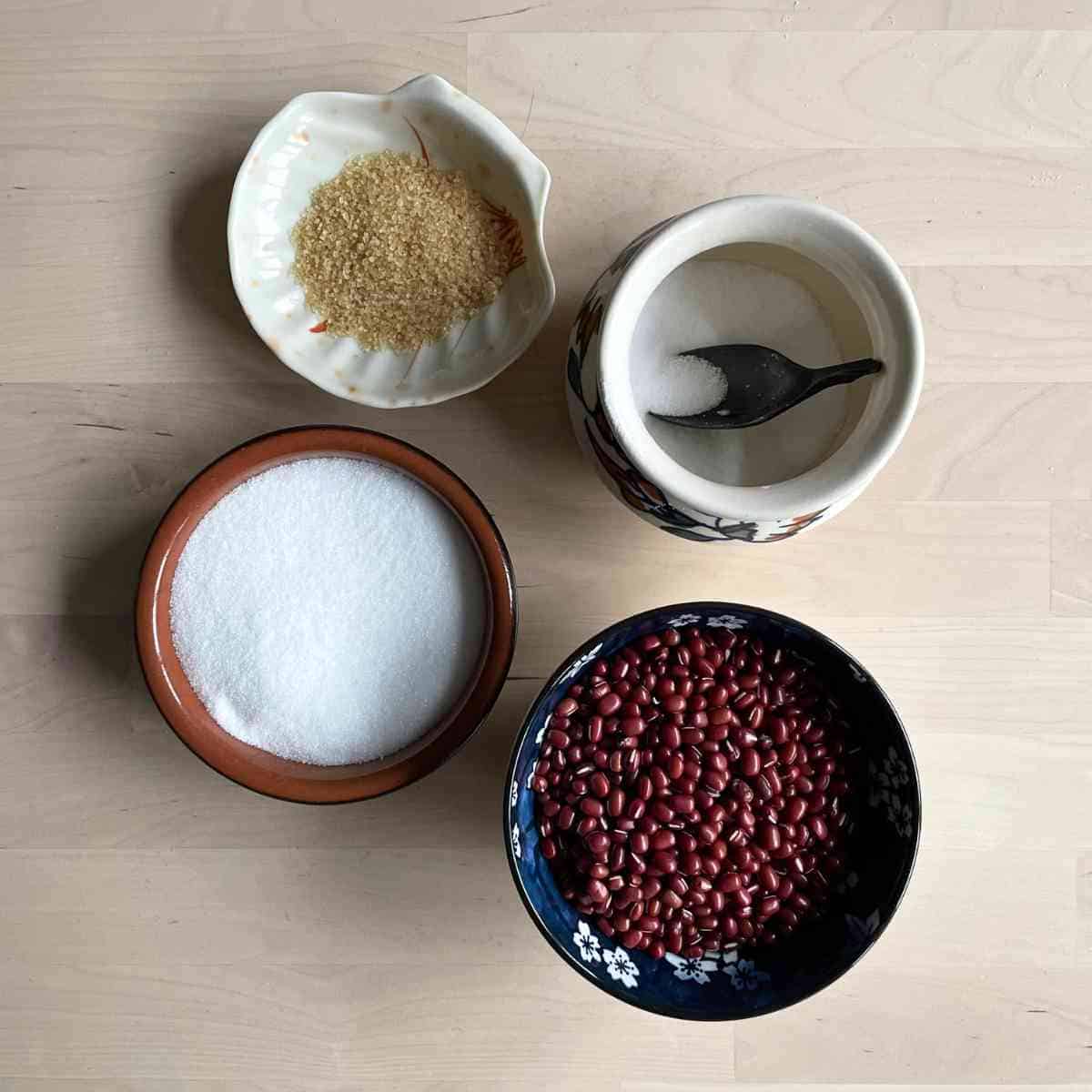
Different types of sugar are also added to the recipe. Honey is sometimes used to add a floral note to the earthy adzuki. Japanese recipes use white sugar, while Chinese ones use rock sugar instead.
Brown sugar, while less common, provides a caramel flavour reminiscent of rock sugar (which is difficult to find). For this reason, we have included a mix of both in our red bean paste recipe.
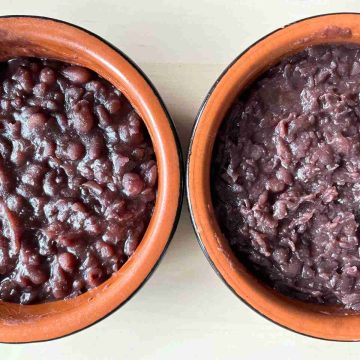
Red Bean Paste (Hong Dou Sha/Anko) Recipe
Ingredients
- 250 g dried adzuki beans
- 200 g white sugar
- 25 g brown sugar
- pinch of salt
Cooking Instructions
- Rinse beans in water and soak them overnight. The next day, drain and discard the soaking liquid.
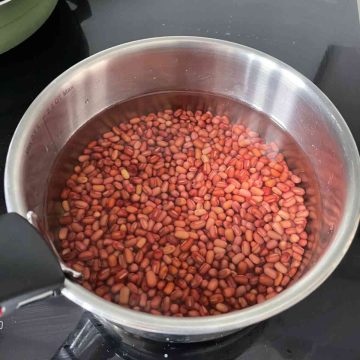
- Next, boil the beans in roughly 4 cups of water (or a large enough amount). Reduce the heat to a simmer and cover it with a lid. Intermittently check on the beans to make sure they are still submerged in water.
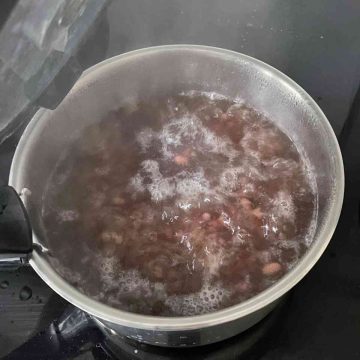
- After about an hour, test the tenderness of the bean by crushing it with your fingers. Make sure it is soft and easily crushed.
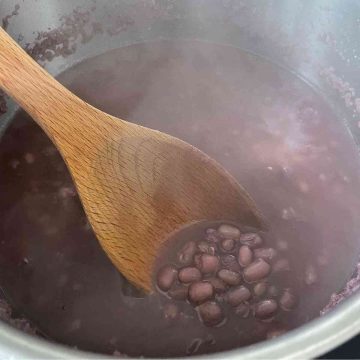
- Remove the lid, stir the red beans, and add the sugars. Boil until thickened.
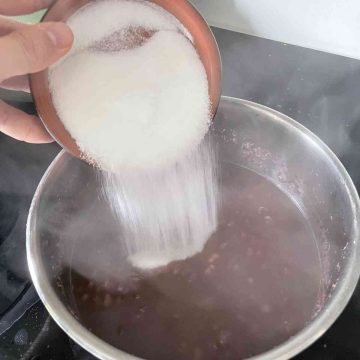
- Strain the mixture through a sieve and mash until the mixture is combined. Then, cool in the fridge until the mixture has solidified into a red bean paste.
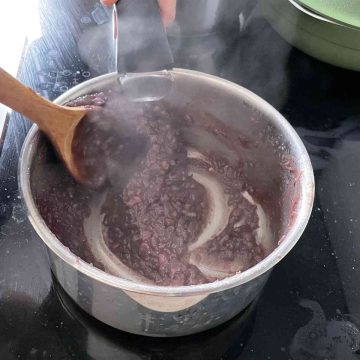
Recipe Notes
Nutrition
Calories have been calculated using an online calculator. Nutritional information offered on Honest Food Talks is for general information purposes and is only a rough estimate.
Substitute
If you cannot find adzuki at your local Asian market (where they are commonly found), you can try using other beans instead. Some of the best are kidney beans, cannellini, or black beans.
However, note that all these will taste completely different from adzuki. As a result, filling made from these might not work in every recipe. Kidney beans are the best and closest substitute.
However, dried adzuki ships well and can thus be ordered online without much difficulty. Using substitutes is not recommended as it makes the cooking process of the red bean paste much more variable. For example, the time taken to cook the beans might change.

Additionally, each of the beans mentioned above has a different flavour profile and thus cannot be used in each dish. Some are better disposed for savoury applications instead, for example.
If you do not have red beans in your pantry, we have sweet paste recipes for other beans that you can check out. We have the green tea mung bean paste and the lotus seed paste, both of which are popular Asian sweet dessert fillings.
Tools
Many recipes for red bean paste can be found online. They use a pressure cooker, which has the advantage of drastically reducing cooking time.
It is also easier to husk the adzuki if cooked in a pressure cooker. However, since not everyone has a pressure cooker, our recipe does not use one. We simply use a pot and wooden spoon.
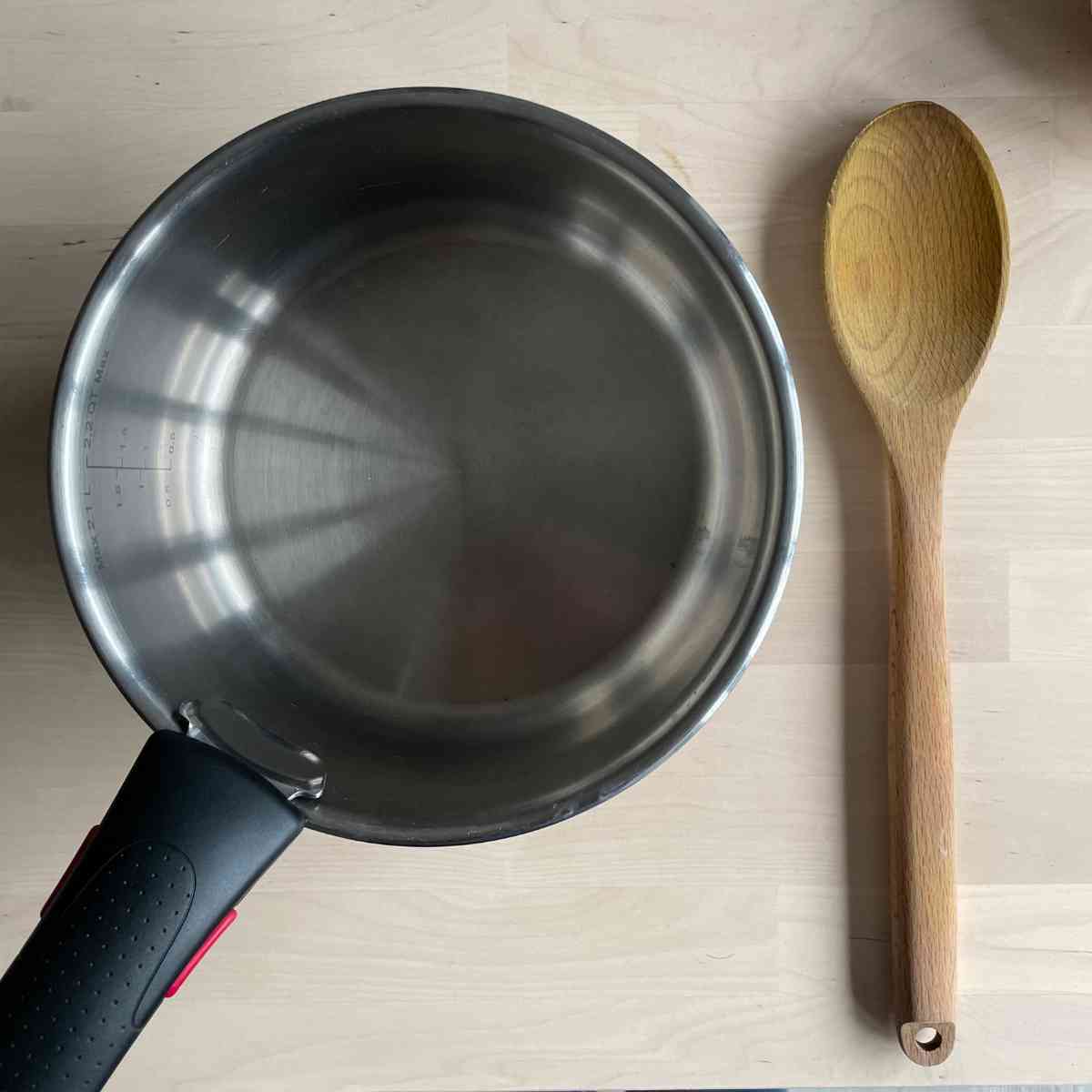
A potato masher and a sieve are other equipment often used to cook this sweet filling. The latter is a basic cooking utensil that should be accessible to most people.
On the other hand, potato mashers are often more difficult to find and can thus be substituted with a heavy metal or wooden spatula or spoon.
Red Bean to Sugar Ratio
The sugar in your red bean paste depends on what it will be used for. Generally speaking, we recommend adding less sugar to start with. Remember, you can increase sugar content but not take it away.
Because of its high sugar content, anko is used as a filling in desserts like buns, pastries, mooncakes, breads, or other sweets, traditional or otherwise. It is also used as a topping for shaved ice, ice cream, popsicles, or drinks.
On the other hand, low sugar content anko is eaten on its own.
Ultimately, the anko's usage decides how much sugar it should contain. Our recipe includes a low sugar content.
Textures
As mentioned previously, there are two broad categories of red bean paste.
Tsubu-an (Chunky Texture)
The most commonly homemade version (and the one which this recipe makes) is thick, chunky, and sticky. In Japanese, this is called Tsubu-an.
For Tsubu-an, the husks of the Adzuki are not removed before mashing. This produces a softer, slightly crunchier filling. It also has the added advantage of retaining most of the vital nutrients in the Adzuki.
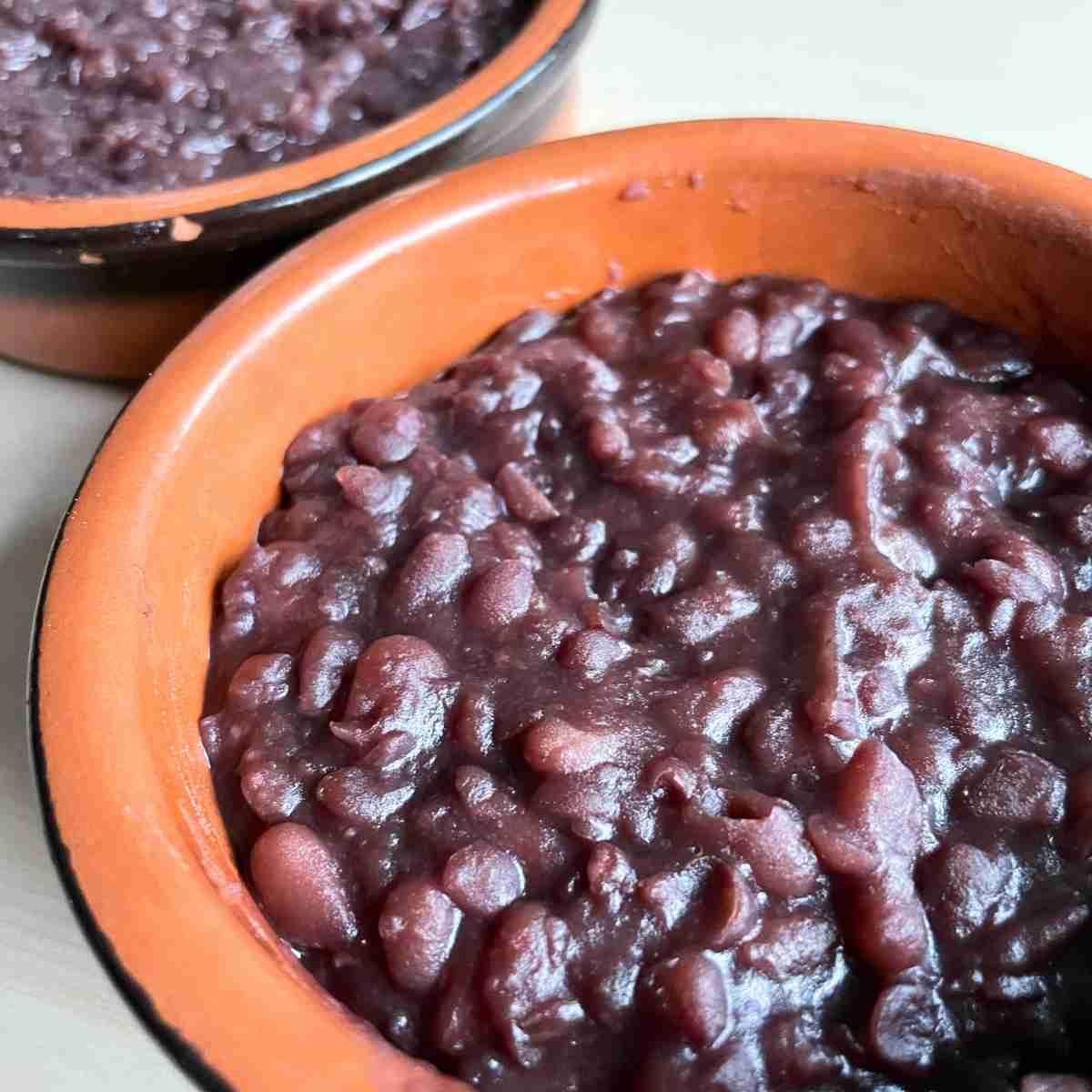
Koshi-an (Smooth Texture)
The second variety of anko is smoother, silkier, and much more homogeneous in texture. In Japanese, this is called Koshi-an.
This type of red bean paste is commonly used in restaurants or bakeries and can be bought at Asian markets. It is made by removing the husk of the Adzuki. This removes nutrients and strips the filling of the adzuki's natural sweetness.
Thus, it requires a larger amount of sugar to taste the same. This type of anko is more difficult to make at home.
Our recipe results in the first type of anko: thick, smooth, and sweet.
How to store
Red bean paste should be stored in airtight containers to prevent browning or oxidation. It can be kept in the refrigerator for a week.
For long-term storage, it can be frozen. Frozen is solid, and it should last about a month.
Different uses
Red bean paste recipes usually refer to the sweet filling used for mooncakes, mochi, buns, and more. However, if we look into it more closely, the usage of the sweet filling depends, of course, on the cuisine that prepared it.
Japanese cuisine adds anko to everything from pastries to buns to popsicles to mochi filling and even ice cream. However, it is mostly used in sweets.
In Chinese cooking, anko is even used in savoury preparations. These include savoury bread or, less commonly, savoury soup (the latter is more widely cooked as a sweet dish).
It can be added to porridge, rice, or steamed buns in Korean cooking.
Thus, red bean paste is one of the most versatile preparations in any cook’s arsenal. Whether you are looking to cook traditional or try something new, anko can be incorporated to add a sweet, earthy taste.
Red bean benefits
Apocryphally, adzuki became a mainstay in Asian cuisine purely because of its health benefits.
In Chinese cuisine, these beans are used to restore kidney health. Thanks to an increase in pugar production, beans went from being a luxury food restricted to the nobility to being enjoyed by everyone in Japan.
Adzuki was a highly desired food. As ancient wisdom often turns out to be, this was, not without merit.
Red bean paste’s taste is mild and earthy, concealing its vast storage of healthful properties. These health powerhouses are loaded with nutrients, such as fibre, folate, vitamin B6, and riboflavin.
Adzuki contains Magnesium, selenium, copper, zinc, iron, potassium, phosphorus, and thiamin, among other minerals. 100 grams of Adzuki contains 7.5 grams of protein and only 128 calories.
So, if you want to make healthy, less processed sweet treats, try making anko and using it in your recipes. We hope you enjoyed this in-depth look at the building block of many dishes: red bean paste. Keep cooking (and eating).

Ann zaina
Can’t wait to try it wonderful video and information.
Thank you
Morgan
Perfect texture and sweetness! I'd hate to waste the sweet bean liquid that comes out during straining, do you have any ideas for how to use it? Thank you for the recipe!
Julie
Didnt know it would be simple till i read this! tysm for the recipe. it turned out great!